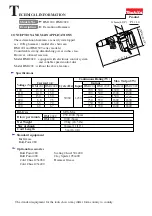
27
After Sales Support
EMAIL: service.australia@einhell.com
TEL: 1300 922 271
Keep the noise emissions and vibrations to a minimum.
•
Only use appliances which are in perfect working order.
•
Service and clean the appliance regularly.
•
Adapt your working style to suit the appliance.
•
Do not overload the appliance.
•
Have the appliance serviced whenever necessary.
•
Switch the appliance off when it is not in use.
•
Wear protective gloves.
Residual risks
Even if you use this electric power tool in accordance with
instructions, certain residual risks cannot be rules out.
The following hazards may arise in connection with the
equipment’s construction and layout:
1. Lung damage if no suitable protective dust mask is used.
2. Damage to hearing if no suitable ear protection is used.
3. Health damage caused by hand-arm vibrations if the
equipment is used over a prolonged period or is not
properly guided and maintained.
6.5. BEFORE STARTING THE
EQUIPMENT
Charge the battery pack with the charger supplied. An empty
battery pack requires a charging period of approximately 1
hour.
For more details about charging the battery pack please read
the operating instructions of the 1-hour charger.
Always remove the battery pack before making adjustments
to the equipment.
6.5.1 Mounting and removing the battery pack (Fig. 1/Item
5)
Mounting:
Push the battery pack (5) onto the equipment until it latches
in place.
Removing:
Press the pushlock button (1) and pull the battery pack (5) out
of the equipment.
6.5.2 Safety guard (Fig. 1/Item 15)
•
The safety guard (15) protects the user from accidentally
touching the saw blade (12) and nevertheless enables you
a free view of the cutting area.
•
The safety guard (15) must always be fitted when carrying
out cutting work.
6.5.3 Changing the saw blade (Figs. 2-3/Item 12)
Important!
•
You can fit or replace saw blades without using any other
tools.
•
Remove the battery pack before you fit or replace a saw
blade.
•
Set the selector switch for pendulum action (8) to
position 2.
•
The teeth of the saw blade are very sharp!
•
Turn the blade holder (14) and insert the blade (12) into
the holder (14) as far as the stop (Fig. 2). The teeth on the
saw blade must be pointing forwards.
•
Allow the blade holder (14) to slide back to starting
position. The saw blade (12) must sit in the guide roller
(10) (Figure 3).
•
Check that the saw blade (12) is securely mounted in the
blade holder.
•
Follow the instructions above in reverse order to remove
the saw blade.
6.5.4 Installing the parallel stop (Fig. 4/Item 11)
•
The parallel stop (11) enables you to saw parallel cuts.
•
Loosen the locking screw (13) on the soleplate (7).
•
Now slide the parallel stop (11) into the guides on the
soleplate (7). You can fit the parallel stop (11) on either the
left or right of the equipment.
•
The guide strip must always face downwards. Set the
required distance using the measurement scale on the
parallel stop (11) and retighten the locking screw (13).
6.5.5 Setting the soleplate for miter cuts (Fig 5)
•
Use the Allen key (4) to loosen the screws for the soleplate
(17) on the bottom of the adjustable soleplate (7) (Figure
5).
•
Pull the soleplate (7) slightly forward. The soleplate can
now be swiveled a maximum 45° to the left and right.
•
Move the soleplate into the required position and
refasten the screw securing the soleplate (17).
6.5.6 Adapter for dust extraction system (Fig. 6/Item 6)
•
Connect your jigsaw to a vacuum cleaner using the
adaptor for dust extraction (6). This will provide excellent
dust extraction on the workpiece. The benefits are that
you will protect both the equipment and your own
health. Your work area will also be cleaner and safer.
•
Dust created when working may be dangerous. Refer to
the section entitled “Safety instructions”.
•
Attach the adaptor (6) as shown in Fig. 6, so that it is
securely seated in the housing.
•
Fit the vacuum tube of the vacuum cleaner onto the
adaptor opening (6). Check that the connections are
airtight.
6.6. OPERATION
6.6.1 ON/OFF switch (Fig.1 /Item 3)
To switch on:
Press the locking button (2) and the ON/OFF switch (3) at the













































